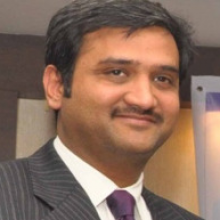People Planning: Essential inputs for your Annual Operating Plan

Business Development
226 week ago — 10 min read
Having set the context for an Annual Operating Plan (AOP) and the ‘middle line’ discussion in the past two articles, it is important that we now get into the essential components of the 'middle line’ in the AOP. Let us discuss the ‘people’ component now.
People component or human resources, as popularly known, are undoubtedly the most critical component in an AOP. The dependency of a business plan to be implemented throughout the year, hour by hour, each day at various locations and dimensions of operation depends upon the quantity and quality of people and human talent. Both the quantity and quality of human talent require investments to build capabilities and competencies of existing talent or buy (aka hire) new talent.
The key points to be kept in mind are as follows:
1. Business vision and goals
Contrary to the role of people and talent function earlier, where the focus was to deliver on the directions of business to be competitive, it is important for the board and the business owner to present the business vision and goals to the people. Thereby enabling them to come with a strategic plan for talent in the organisation. It may require the business to step back a few steps, but this is necessary deliberation for a robust output in the annual operating plan. Along with the vision and goals, the organisation structure, with the hierarchies clearly defined, is a necessary starting point.
Human resources are undoubtedly the most critical component in an Annual Operating Plan. The dependency of a business plan to be implemented throughout the year, at various locations and dimensions of operation, depends upon the quantity and quality of people and human talent.
2. Business financials and segment-wise numbers
The devil lies in the detail, is a very appropriate adage that fits in while dealing with the people aspect of the AOP. The common overlook is the view of the forest and missing the bushes, in the context of people while making an AOP. Both people and talent function have significant value to add today, by deliberating and getting into brainstorming discussions to get more clarity on the roll up to the number. People and human resources function must take up the responsibility to discuss issues on productivity, efficiency, quality of talent for each line of business, at each level; how many to be hired and how many to be developed. All of these emerge from the business leaders’ clarity of where they want the business to grow and go.
3. Components of financials for people and talent
Businesses imagine the only investment or line item in people AOP is salaries and wages, some may progress a little bit to compliances and administration. However, by research, it has been observed that in some businesses the people component of the middle line constitutes over 45% of the total middle line contribution. Therefore, this is the single largest enabler to business. In some cases, this figure is only the salary, wages, and compliances. The question to be discussed by the business leaders is investments for growing and developing the people and talent. The key components of people function should be distributed in the areas of:
a. Salary or wages
b. People development and growth
c. Engagement and ambassadorship
d. Operations
e. Strategic investments of employer branding
a. Components of financials for people and talent: Salary and wages
Salary and wages constitute the main line item in the AOP. The balance to maintain is the amount of incremental impact to meet the aspiration of high performing talent who have contributed significantly and meeting the sustenance of other contributors. The compensation and benefits dimension of people function contributes and advises the business leader on how to ensure a balance between the bottom line and the aspirations of people are met.
b. Components of financials for people and talent: People Development and growth
What gets commonly ignored is the nourishment of people. Most organisations forget the need for hierarchy - beyond the basic needs, which is met by salary, the other needs of people, one of them being growing as an individual, is missed out. It is time for mid-sized businesses to start investing in people development; especially for the top talent. This not only brings back the value to the organisation in business operations, but also fulfils the need of high potential talent. Hence, leadership development programmes, coaching initiatives, regular assessments, Management Development Programme (MDP) for high performers, skill building must be planned and done regularly throughout the year and not ignored or done sporadically. Initiatives for organisational development conducted regularly ensures that the organisation is detoxed and the climate and culture are vibrant and fresh. This investment is similar to the Planned Preventive maintenance planned for plant and machinery. The only difference is that it is being done for appreciable assets.
c. Components of financials for people and talent: Engagement and Ambassadorship
Something that business owners and mid-sized companies do exceptionally well, is binding people with their personal touch. However, this is possible through a personal connection of the founder, who acts like a parent towards the whole organisation and personally takes care and interest in the welfare. This is an excellent practice and must continue. However, in our observation of having worked with over 100 plus mid-sized companies, the damage it does is, it creates non-ownership of engagement and brand ambassadorship from the manager and supervisor. Looking closely - a team member/employee spends the whole day working very closely with the manager/supervisor. The business owner, the founder will never be able to give so much time to all the employees (sometimes hundreds of them spread across countries). Hence, it becomes important to plan engagement and ambassadorship programmes through people and talent function, to ensure that managers and employees are engaged. Engagement is sadly misunderstood as fun at work activities alone. These are important indeed, but more robust and fundamental initiatives of engagement that create positive brand ambassadorship must be planned and investments made.
d. Components of financials for people and talent: Operations
Much later in the year, one of the key instances of debate between finance and people function is no budget for HR operational efficiency. Whereas some may state this as obvious, it is crucial to allocate it separately. Compliance, external stakeholders, extraordinary situations of business continuity, and risk mitigation require instant operational decisions to help the system to continue to operate. COVID-19 has demonstrated beyond any doubt the impact of the Force Majeure, where the global workforce was locked in their homes for 12 months. The function which was engaged overtime besides IT, were the people, who were for most of the time dealing with operational matters. Some of the issues were unprecedented. Hence, the leaf of learning is to divide investments for this area. Planning for technology in HR is very important and needs to be kept in mind. Technology will drive people's functions in the times to come. Hence, investments in technology and digital should surely be considered in people and talent AOP.
e. Components of financials for people and talent: Strategic investments of employer branding
The radiation of great talent creates waves about the organisation on the outside. It is very similar to an institute having a star alumnus, who have done exceedingly well in their career. Businesses, both large and small must budget for planned and strategic employer branding initiatives, by participating in competitions and becoming members of key bodies both at an organisation level as well creating opportunities for star employees to be showcased to the world through planned initiatives. This goes a long way in not only creating a great brand statement for the organisation, but also meets the aspiration of top employees of having shared their success stories.
4. Who owns the People AOP?
The people and talent function head must be empowered to present and own the HR AOP for the organisation. In many cases, it works the other way. People and Talent functional heads also need to improve and upgrade their business understanding and financial, numerical orientation to be able to add value and speak the common language.
5. What is the starting point?
The starting point of the HR AOP must be along with business AOP at least 90 days prior to the new financial year. It is normally an activity kickstarted by the business leader, along with the people and talent function head leading it from the people’s perspective.
Needless to mention the most appreciable, dynamic and productive assets of the organisation are it’s people and it is time for business leaders in mid-sized companies to start giving serious thought to the people function as a more value-added function contributing to business growth.
Also read: Annual Operating Plan: A compass for your business in the new year
To explore business opportunities, link with me by clicking on the 'Invite' button on my eBiz Card.
Image source: shutterstock.com
Disclaimer: The views and opinions expressed in this article are those of the author and do not necessarily reflect the views, official policy, or position of GlobalLinker.
Posted by
Debashish DasLeadership and Business Growth Coach with over 20 years of experience in coaching and consulting. Specialist in HR, Strategy, Business Growth for SME and Corporates. As a coach...
Network with SMEs mentioned in this article
View Debashish 's profile
Other articles written by Debashish Das
Annual Operating Plan: Approach to budget allocation
230 week ago
Most read this week












Comments (1)
Share this content
Please login or Register to join the discussion